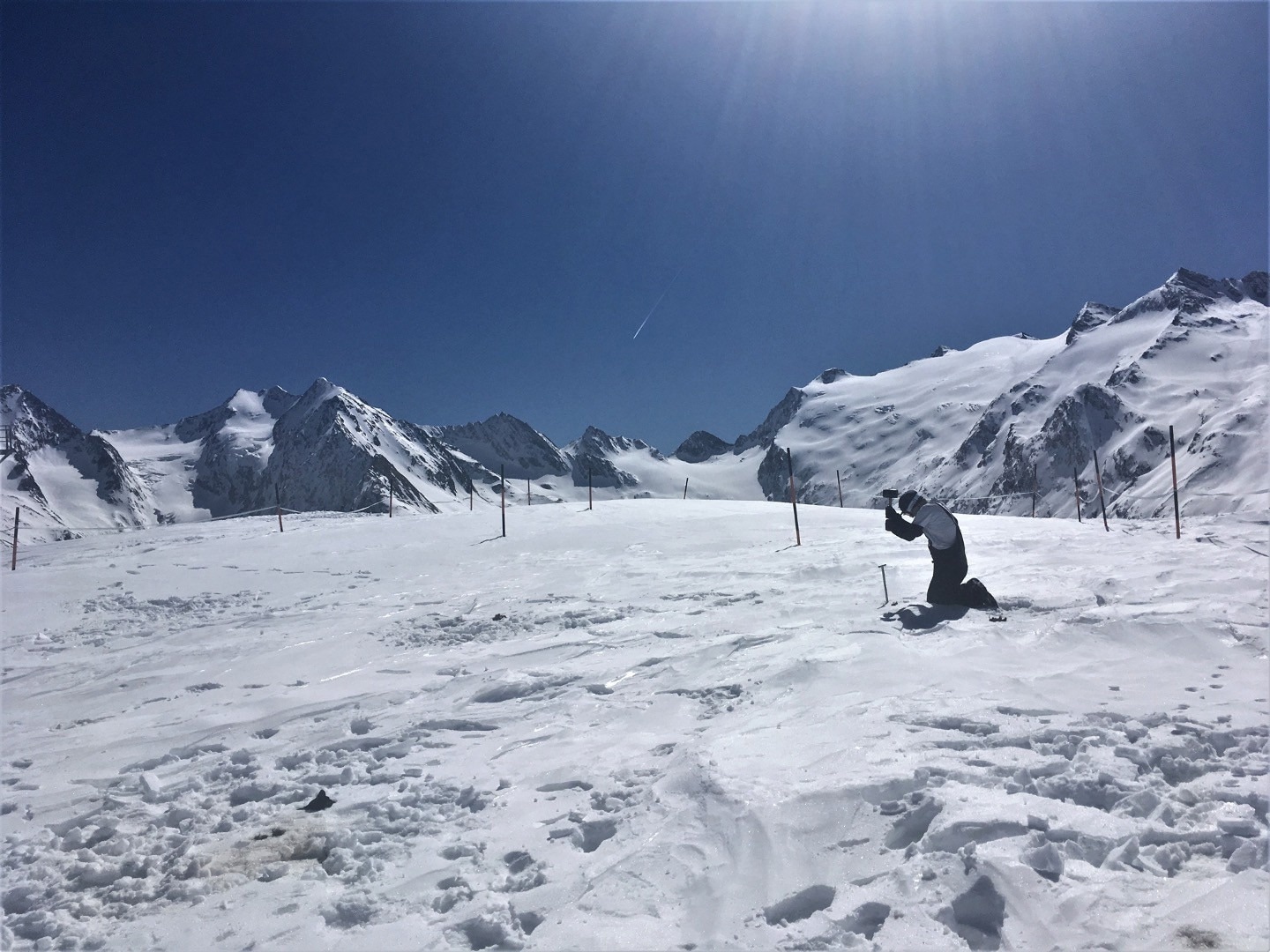According to a recent study published on March 21st, 2024, lower snow cover and changing plant patterns in the Alps, both caused by climate change, are having significant combined effects on biodiversity and the functioning of ecosystems in the high mountains.
 Snow sampling in the Alps. Image Credit: Helen Snell
Snow sampling in the Alps. Image Credit: Helen Snell
Mountain ranges covering extensive portions of the planet are warming more faster than adjacent lowland regions, resulting in massive decreases in snow cover and rapid upward migration of dwarf shrubs like heather.
Scientists at The University of Manchester have discovered that these changes are interfering with the timing of critical alpine ecosystem activities carried out by plants and soil microorganisms.
The study, published in the journal Global Change Biology and funded by the UK Natural Environment Research Council, suggests that high mountain ecosystems could be less capable of retaining the critical nutrients required to sustain plant growth and biodiversity in these adverse conditions.
Our paper reveals how important the timing of many plant and soil processes are in seasonal ecosystems. People may be familiar with mismatches between plant flowering and the emergence of pollinators caused by climate change. In our study, we have demonstrated that plant and soil processes show fascinating seasonal dynamics, and that the timing of these processes can also be disrupted by climate change. The high mountains are like a canary in the coalmine because they are warming much faster than the global average. That makes our findings particularly alarming.
Dr. Arthur Broadbent, Study Lead Author and Postdoctoral Co-Investigator, The University of Manchester
Every year, seasonal changes in mountain ecosystems cause significant nutrient transfers between plants and microbial communities in alpine soils. Following snowmelt in the spring, plants begin to develop and compete for resources with soil microorganisms, causing a shift in nutrient storage from soil to plant. This transfer is reversed in fall when plants die and nutrients return to the soil through dead leaves and roots.
Snow functions as an insulating blanket in alpine winters, allowing soil microorganisms to continue their activities, store nutrients in their biomass, and help plants withstand the harsh conditions. According to predictions, climate change will lead the European Alps to lose 80–90% of their snow cover by the end of the century and will cause the snowmelt to occur five to ten weeks earlier.
Declining winter snow cover is one of the most obvious and pronounced impacts of climate change in the Alps. Its effects on the functioning and biodiversity of alpine ecosystems are a major concern for people living in Alpine regions and beyond.
Michael Bahn, Professor, University of Innsbruck
Working with the University of Innsbruck, Helmholtz Zentrum München, and the UK Centre for Ecology and Hydrology, the scientists from The University of Manchester conducted a long-term field experiment in the European Alps. The results emphasize how seasonal transfers and nutrient retention between plants and soil microorganisms are negatively impacted by climate change.
Our work demonstrates how the combination of different facets of climate change can severely disrupt below-ground ecological processes that underpin plant growth in alpine ecosystems, with potential long-term consequences for their biodiversity and functioning.
Richard Bardgett, Study Principal Investigator and Professor, Ecology, Department of Earth and Environmental Sciences, The University of Manchester
It is still very difficult for scientists to comprehend how ecosystems react to several simultaneous effects of climate change. Ecosystem functioning might experience abrupt and unexpected shifts due to the interplay of direct and indirect climate change effects, such as changes in snow cover or less evident ones like dwarf shrub proliferation. It is not feasible to anticipate these impacts by looking at the components of climate change separately.